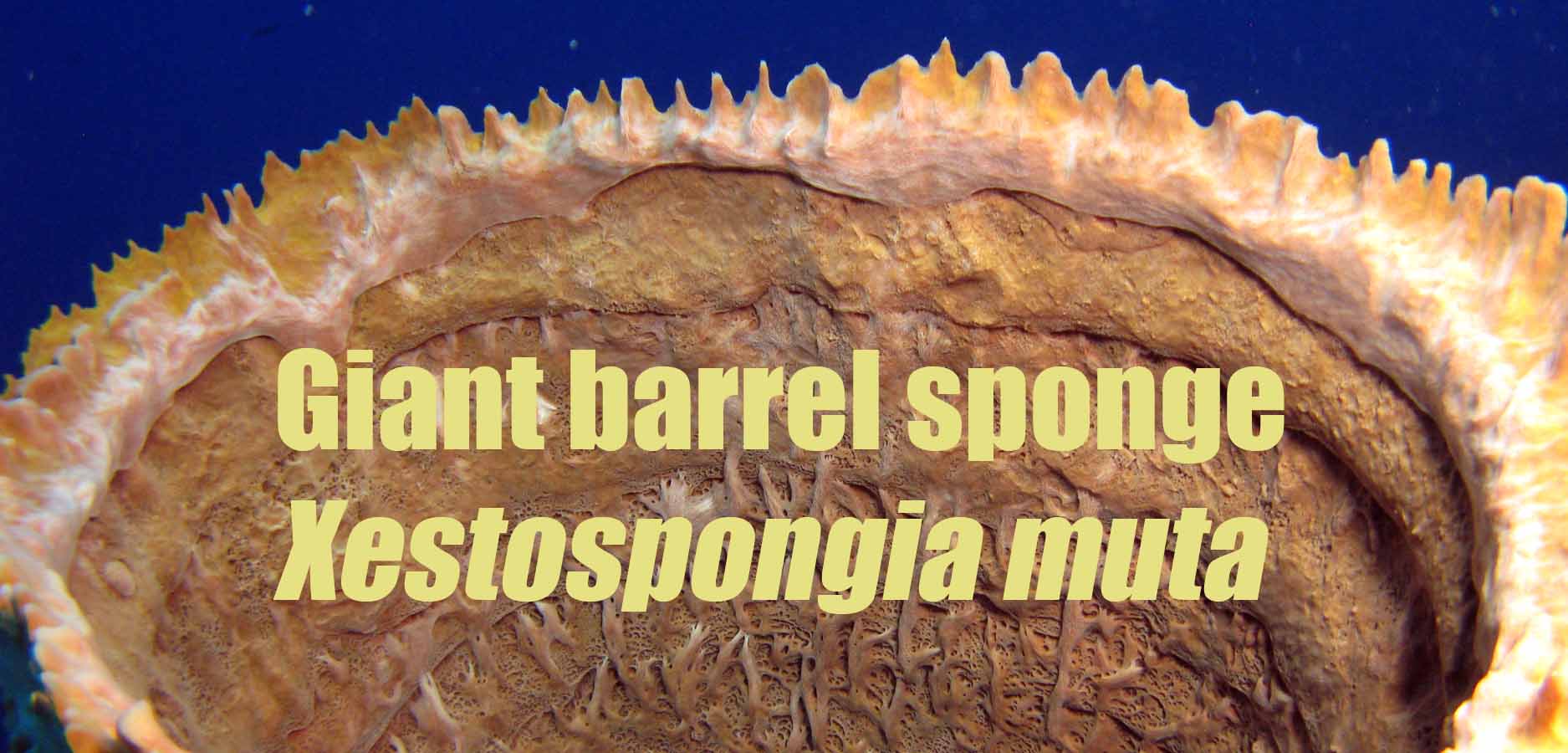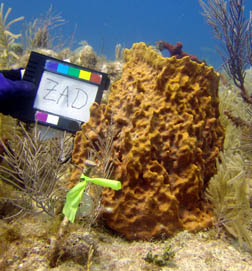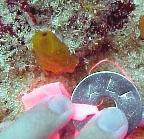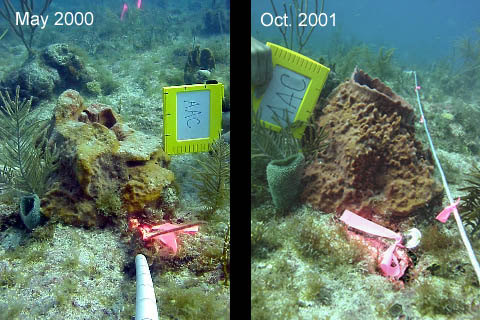People:
Joseph Pawlik
Graduate students
Information for undergrads and
prospective grad students
Science:
Marine chemical ecology
Giant barrel sponge Xestospongia muta
Marine invertebrate larval
biology
Photographic guide to sponges of the Caribbean
Courses:
BIO 318:
Invertebrate
Zoology
BIO 501: Science as a Profession
| HOME |

Monitoring Populations of Xestospongia muta
|
In 1997, we began a pilot study monitoring populations of X. muta on the coral reefs off Key Largo, FL. Three years later, with the added use of the NURC-UNCW Aquarius habitat, we had a total of 4 monitoring sites: 2 at 15 m depth on Pickles Reef and Conch Reef, and two deeper sites on Conch Reef, at 20 m and 30 m. In Oct. 2006 using Tri-Mix Technical Diving, we added a deep monitoring site at 50 m. Each site consists of three 16 m radial transects, within which each individual X. muta is uniquely identified and monitored over time (right). Sites are visited twice a year, with data collected on recruitment, mortality, growth, bleaching and disease. In addition, each sponge is photographed, creating a photo library of over 5,000 images. As of May 2005, 617 sponges have been monitored and photographed. |

|
Recruitment & Mortality
 After several years of
study, we are beginning to see patterns of
recruitment and mortality.
Overall, total number of sponges has increased in all sites since 1999.
New, small recruits (right) are regularly found in low numbers. A larger
recruitment event was observed in Fall 1999,
just one year after a mass mortality event linked to Hurricane Georges.
In total, we have observed 20% mortality in X. muta, over half of which is
mortality of new recruits.
After several years of
study, we are beginning to see patterns of
recruitment and mortality.
Overall, total number of sponges has increased in all sites since 1999.
New, small recruits (right) are regularly found in low numbers. A larger
recruitment event was observed in Fall 1999,
just one year after a mass mortality event linked to Hurricane Georges.
In total, we have observed 20% mortality in X. muta, over half of which is
mortality of new recruits.
Growth & Tissue Recovery
Determining sponge growth is the most difficult aspect of this study, because these sponges are highly amorphous. By analyzing paired side and top digital photos of sponges over time, we have documented several instances of ~30% volume regrowth of medium-sized sponges over 18 months following severe tissue loss by line damage (sponge AAC below), and also have found golfball- to baseball-sized recruits appearing suddenly between 6 mo visits. Drastic changes in the size of medium to large-sized sponges have not been evident, however, suggesting that sponge growth may be very gradual or possibly episodic.

X. muta | Population Dynamics | Bleaching | Monofilament Line | Age
